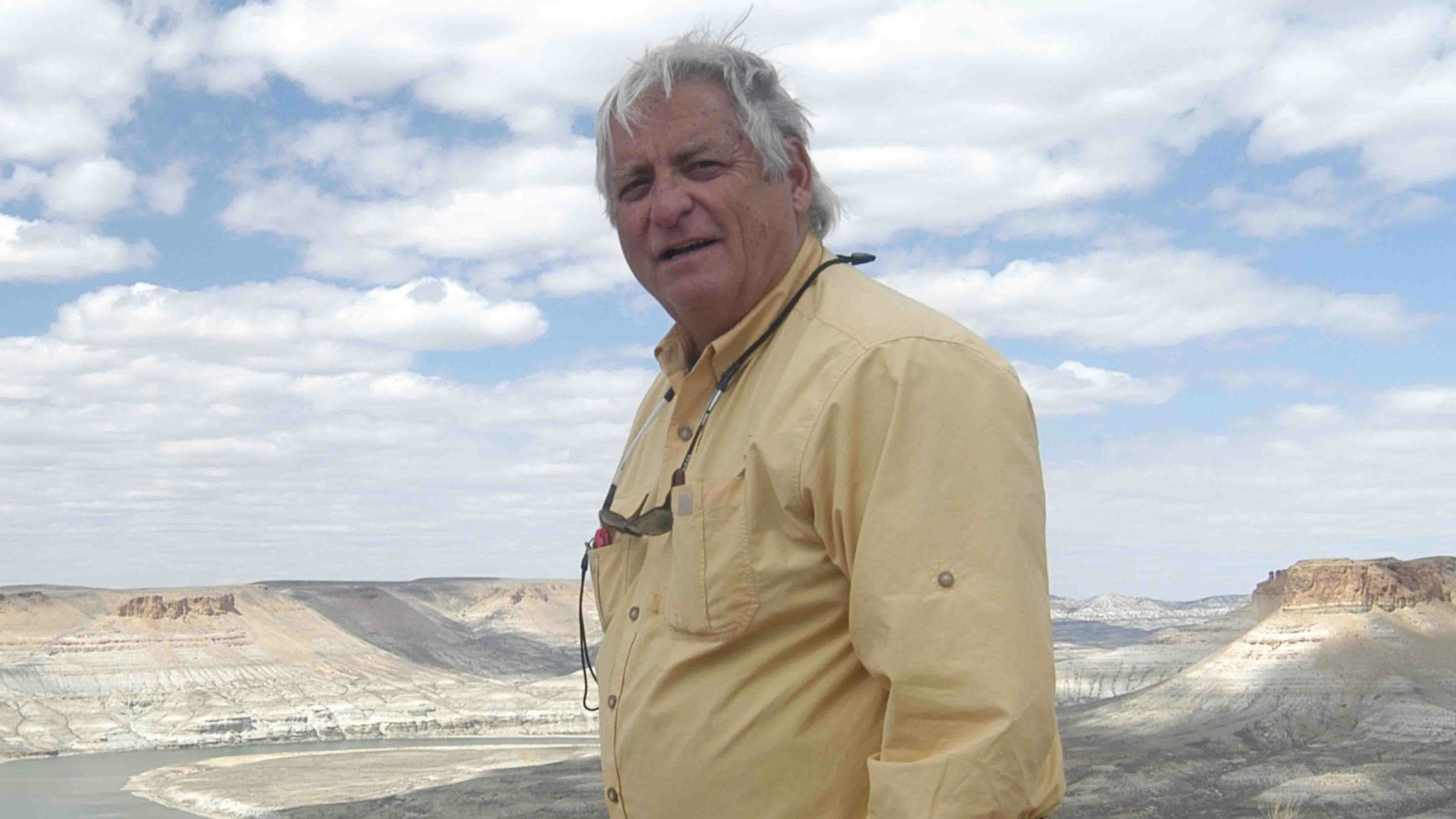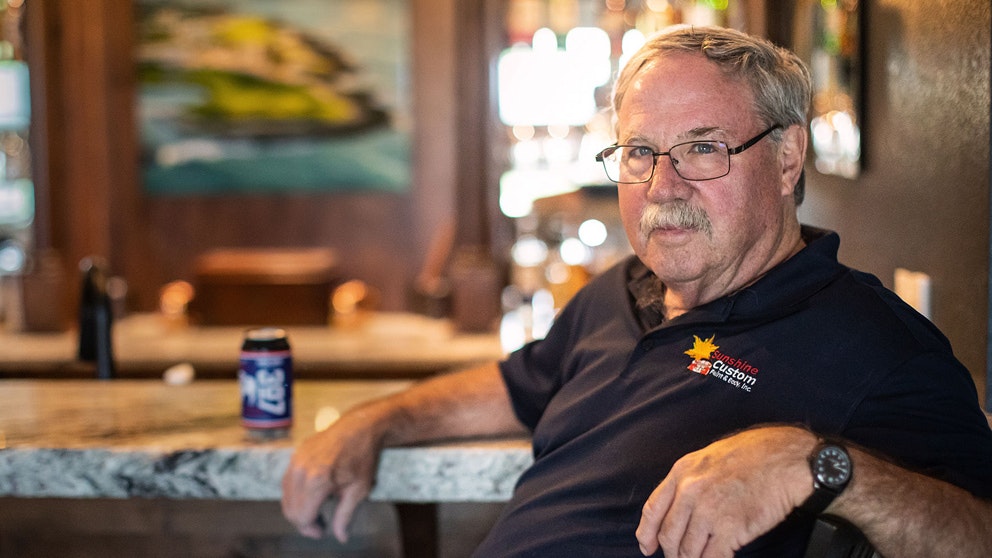Before the Snake River in Jackson Hole had any dam across it, the current ran wide, fast, and turbulent through Jackson Hole. Crossing the Snake, the “accursed mad river,” as the Frenchmen called it, required skill and bravado. At least, that was the case before Bill Menor happened on the scene.
Tall, thin Menor spent his early life in Ohio and came to Wyoming in 1892, squatting on the west bank of the Snake River. In 1894 he started construction of a low log house among the cottonwoods along the bank of the river, and he bought a cow or two, some chickens, and a horse. The hard-talking Menor also built a blacksmith shop, planted a garden, and plowed a field. He eventually opened a store there on the shore of the Snake where he sold fishhooks, tin pans, groceries, and Bull Durham tobacco.
Bill Menor, being an early-day entrepreneur, built the first ferry across the Snake. A second ferry later went in at Wilson. Constructed as railed platform on pontoons, Menor’s ferry moved across the river propelled by the current and guided by ropes attached to an overhead cable. On either side of the river a massive log, called a “dead-man” secured the cable. Menor’s ferry was large enough to hold a four-horse team if the leaders were unhitched and held beside the wagon.
When the Snake was running bank-full and raging, Menor’s ferry was the only crossing place in a forty-mile stretch–practically the length of Jackson Hole. In those early days, there was no safe crossing at all in the lower end of the hole, and people had to go to Moran where they could cross a toll bridge. Menor’s ferry crossed the Snake near Moose, just north of the present Grand Teton National Park Visitor’s Center and near the Chapel of the Transfiguration.
If the river was running too full, Bill wouldn’t risk his ferry because he knew the Snake’s foibles and the power of the water. Once a huge, uprooted tree swept against the ferry with such force that the ropes broke, carrying the ferry – and Menor, who was on board – downstream some distance before it grounded on a submerged sandbar. Neighbors rushed to the rescue as the ferryman cursed them and the river for his predicament.
Menor’s younger brother, Holiday, also eventually settled on the banks of the Snake River in Jackson Hole. Upon his arrival in 1905, Holiday lived with Bill. Soon after, Holiday moved out of Bill’s house to claim land on the east shore of the Snake.
During the wild berry season in late summer, Bill charged “huckleberry rates” to local people wanting to cross on his ferry. That called for fare one-way – made in payment with a bucket of freshly picked huckleberries – to cross the Snake when the berries dripped with juice along the ridges and around the lakes under the Tetons. Holiday liked berry season, too. He canned up to sixty quarts of huckleberries every year. He used the berries–and prunes, beets, raisins, or anything else that was handy–to make a little home brew. He called it wine, but seldom gave it time to mature.
When fall turned to winter in Jackson Hole, Bill took his ferry from the river. From then until he resumed operation in the spring, horses had to ford the river, but people on foot could cross on the little platform car. They boarded, sat down, and then Bill released the car. With a quick movement it ran down the slack cable to within feet of the river. The passengers then hauled themselves up the cable to the opposite bank.
Eventually Menor and his neighbors built a winter bridge across the river. Neighbors up and down the river, who might want to cross before the ferry was back up and running in springtime, readily gathered to put the log bridge in place in the fall. The story was different in the spring, however, when it came time to remove the logs from the river. With the ferry back in operation and crops to plant, men who helped build the bridge in the fall couldn’t find the time to remove it in the spring.
Finally one spring, only one man helped Bill and Holiday Menor move the bridge. Logs too heavy for the small crew to remove got a push into the river, and that was the last season of the winter bridge.
In 1918, Bill Menor sold his ranch and his ferry to Maud Noble and Frederick Sandell. Menor said he had had enough of high water and low water, of fog, wind, rain, and snow, but he didn’t seem able to drag himself from the banks of the Snake. He paced a floor no longer his and cursed when a meal wasn’t ready. Finally, he packed his bags and left for California. Holiday eventually followed him there.
In 1923, an historic meeting took place in Noble’s home, then called the Ferry Ranch, and the first discussion began about attracting a philanthropic group or individual to acquire privately owned lands in the valley and turn the region into a preserve. Noble and Sandell sold their property in 1929 to the Snake River Land Company, predecessor to Jackson Hole Preserve, Incorporated, and later it was turned over to the National Park Service. The old cable that pulled the ferry across the river countless times swung aimlessly across the current while the pontoon boats that supported the ferry platform lay abandoned and rotting on the river bank.
Twenty years later, in 1949, the Jackson Hole Preserve reconstructed the ferry. It relied on old photographs, the remnants of the original pontoon boats, and the memories of countless old timers to make an accurate recreation of the once-bustling ferry crossing.
Now, Menor’s home and site of the ferry operation are attractions in Grand Teton National Park. The ferry doesn’t run, but volunteers host summer programs for visitors letting them know the story of Bill Menor and his ferry operation.
Candy Moulton can be reached at Candy.L.Moulton@gmail.com





